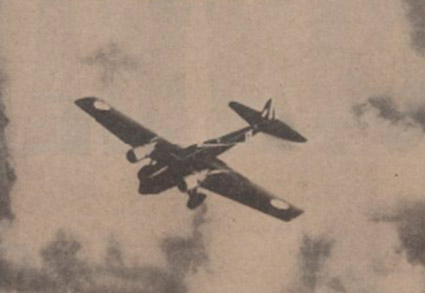World war II
This conflict was referred to as the phony war in France and the United Kingdom and Sitzkrieg in Germany, as a seated conflict, in the sense of an anchored war, a war of occupation for the Germans.
- Local situation
- Behind the front lines
- Key dates
![]()
Local situation
- Food restrictions, (tickets and ration cards),
- The appeal of 18 June 1940.
- Resistance,
- Road, rails, bridges, and houses to rebuild.
A major exodus of populations from the North and the Paris region to the South began on June 14, 1940. The German Air Force confused these French with the armed columns, and 100,000 civilians died.
On June 22, 1940, France was divided into two parts: the free zone to the south and the occupied zone to the north. The regions of Alsace and Lorraine in eastern France are annexed to Germany.

V1 was transported by trolley to the launch pad,
photographed after the liberation,
Photo courtesy of M. Laurent BAILLEUL www.armes-v.com
Behind the front lines
In terrible aerial bombardments in France, allied bombs had fallen on Vignacourt, intending to destroy German armaments. Several houses were destroyed, like those on the deportees' street.
At the end of June 1940, the Royal Air Force bombed Vignacourt and Abbeville by surprise. The facts were specified in the newspaper "Le Matin," dated July 1, 1940, in the Parisian evening edition. New bombardments took place in the area.
In January 1945, an RAF plane fell on the night of January 14 to 15 in the Vignacourt sector. The location of the accident had been identified by a local association made up of aviation enthusiasts and headed by Mr. Ben. The exact location of this plane was possible thanks to the English pilot's family and the testimony of several local people. One article was published in the local press in 2009, with a return on this site in the presence of the different witnesses.
The kommandantur was quartered inside the village, at the Château du Parc, for instance, where prisoners were locked up.

Illustration photo for the plane piloted by Americans on 27th May 1944
Key dates
1st Sept 1939: Germany invaded Poland.
3 Sept 1939: France and the United Kingdom declared war on Germany.
May 10, 1940: Wehrmacht attacks Belgium and Holland.
20 May to 8 June 1940: Battle of Amiens, the bombing of the city. Miraculously, the cathedral remained standing. Amiens was largely devasted by fires during the Second World War.
May 21, 1940: Battle of Arras.
May 26 to June 04, 1940: Battle of Dunkirk.
May 27 to June 04, 1940: Battle of Abbeville.
June 10 to 25, 1940 - Battle of the Alps.
18 June 1940: General de Gaulle gave a speech on the BBC in London and called for resistance.
22 June 1940: Marshal Petain signs the armistice with Germany.
At the beginning of July 1940, the English army bombed the French battleships stationed near Oran, Algeria. The operation resulted in the deaths of 1,500 French sailors and the loss of four ships. Churchill, who had given a controversial order, feared that the Germans would take control of our fleet.
22 June 1941: Hitler declared war on Russia.
July 17, 1942, to February 2, 1943: Battle of Stalingrad.
16 February 1943: The establishment of the compulsory labor service forced some French people to work in Germany to make up for the lack of manpower.
27 May 1944: A plane piloted by Americans crashed close to Vignacourt. They succeeded in parachuting but were taken prisoner by the Germans. The information was reported in the press.
June 6, 1944: Normandy landing.
25 August 1944: Paris liberation.
31 August 1944: Amiens liberation. British tanks entered the town at dawn.
1 to 22 October 1944: Battle of Aix-la-Chapelle in Germany.
27 January 1945: Auschwitz-Birkenau concentration camp liberation.
11 March 1945: Proclamation of Independence of Vietnam.
11 April 1945: American intervention in the Buchenwald camp. A thought for Mr. Colignon.
8 May 1945: The German capitulation.
August 6, 1945: United States Air Force drops an atomic bomb on the city of Hiroshima.
August 9, 1945: The United-states dropped a second atomic bomb on Nagasaki.
Sept 2, 1945: The Japanese surrender.

General de Gaulle poster
